 About Puma
About Puma
Puma is a world famous brand that manufactures shoes and sports apparel and accessories. Puma is present on- line in the form of its website- puma.com. This website serves the purposes of communicating brand information and providing an e- commerce gateway to Puma’s target audience.
Puma has a wide range of product categories like shoes for running, football, golf and training. Puma wanted its website to fully display all of its product categories and also tailor the website experience for different regions while maintaining its international brand image. They decided to redesign the website with the help of data analysis and testing and commissioned a Google certified partner, Viget to undertake this project. They selected Google Analytics as their web analytics platform for developing and measuring performance of their website.
Goals
Puma is a dynamic company and they strive to continuously improve their products. So it is very necessary to communicate these improvements to their audience and hence there are frequent updations in the website content to help customers attain their goals. Also since Puma is a global brand and is available in almost every part of the world, it is very necessary to determine effectiveness of different promotional content in different geographies.
Puma also wanted to have a distinct look and feel for its different categories like running shoes, football shoes, golf shoes, training shoes etc. while still remaining connected with the central website. Hence Puma required to analyse the web performance of each of its different categories separately and also track the user behaviour on the global puma.com website.
Thus the goals of this project were summarised as below:
- Get insights into the popularity of content and products to decide the digital marketing strategy
- Understand which content engaged customers and contributed to sales geography wise
- Improve on- line customer experience and conversions by optimising the website
- Measure the performance of every Puma product category site
Approach
Viget utilised the various features of Google Analytics like custom variables, filters and segmentation to achieve these goals.
- They tested the website with different variations of content. They used the ‘Custom variables’ feature of Google Analytics to segment visitors on the test variation they saw. Thus Puma got to know the results and effectiveness of different tests. Puma got detailed information about the various goals and micro- conversions for each test variation.
- Google Analytics allows location based segmentation. The path in Google Analytics is as follows: Google Analytics—–> Reporting—–> Audience—–> Geo—–> Location. You can then create segments by clicking on the ‘New segment’ button. Refer the diagram below.
They used advanced segmentation to isolate visitors from different geographies and track their metrics.
- They used advanced features like ‘event tracking’ to measure user interactions with dynamic page elements.
- Google Analytics allows to create ‘filtered’ views wherein some exclusive portion of the data can be analysed. The path is as follows: Google Analytics—–> Admin—–> View—–> Filters. After clicking on the ‘Add Filter’ button, you can create a predefined or a custom filter. Please refer the diagram below.
They used the ‘profile’ and ‘custom filters’ features of Google Analytics to create a view of the central puma.com and of other Puma product category sites. Thus they got insights into the performance of the global puma.com and of the different individual product category sites.
Results
- The result of the above exercise is a dynamic, content rich and engaging website.
- After conducting several tests, Puma found out that on- line orders increased by 7.1% in a particular test variation. Puma adopted that version for its website.
- Combining the above with other insights drawn from data, Puma optimised its content and found that the engagement time of users with content like photos, videos and news almost doubled. This has helped Puma deliver the right content on its website. The user experience is also quite fluid and engaging. Have a look at this promotional content for football shoes.
- Puma has localised its website for different geographies as was their goal. They have featured celebrities for the Indian edition of puma.com. See the picture below where the popular model Lisa Haydon is featured in this Indian version of puma.com.
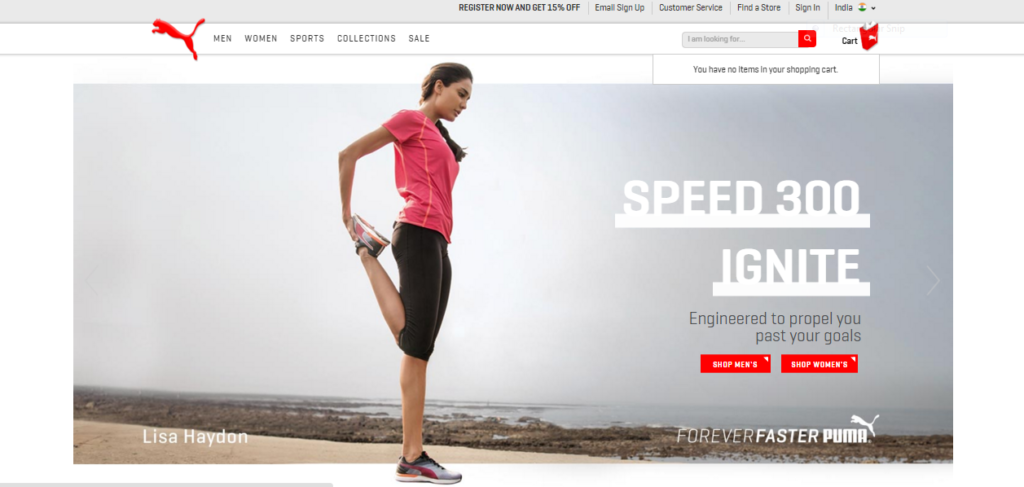
- Creating separate verticals for different product categories on the website was a goal of Puma. They have created these verticals in the website.
They have also created separate focussed promotional content for these different categories. See the content featuring the celebrity Rihanna for training shoes below.
- Puma intended to dynamically engage and communicate with their audience. In the website, you will find a lot of audience engaging content like recent trends, new arrivals etc. See the picture below.
Thus we find that an extremely attractive website of Puma with local content for different geographies has emerged.
Learnings
- Google Analytics helps in analysing segmentwise behaviour on your websites. Thus you can determine the behaviour of users from different geographic regions using Google Analytics. This data helps you in building localised content for these geographic segments.
- Google Analytics gives you engagement metrics like pageviews, time per session, bounce rate, frequency of visits, recency of visits etc. that help you determine which content is engaging your audience more and thus you can focus your efforts in improving that content. Thus you can build more engaging websites using insights from Google Analytics,
- In this case, we learn how test results were obtained by segmenting users on the type of test variation they were visiting. Thus, Google Analytics was used as an effective testing tool.
- Puma got an analysis of user behaviour on different categories of their products on their website by using custom filters.
- Thus, we learn Google Analytics is a very powerful tool using which you can optimise your website to attain your objectives.
Image Courtesies: in.puma.com

 About Puma
About Puma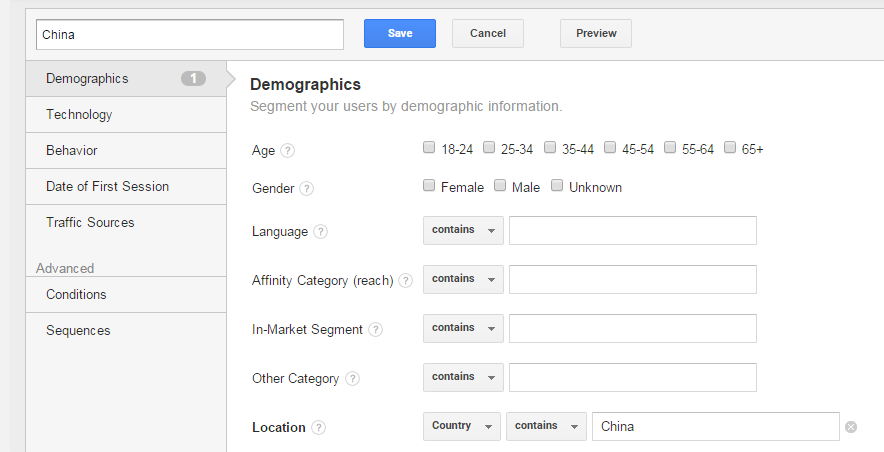
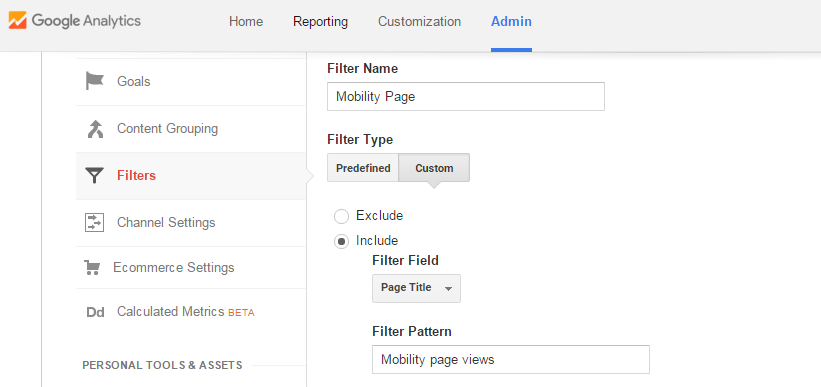 They used the ‘profile’ and ‘custom filters’ features of Google Analytics to create a view of the central puma.com and of other Puma product category sites. Thus they got insights into the performance of the global puma.com and of the different individual product category sites.
They used the ‘profile’ and ‘custom filters’ features of Google Analytics to create a view of the central puma.com and of other Puma product category sites. Thus they got insights into the performance of the global puma.com and of the different individual product category sites.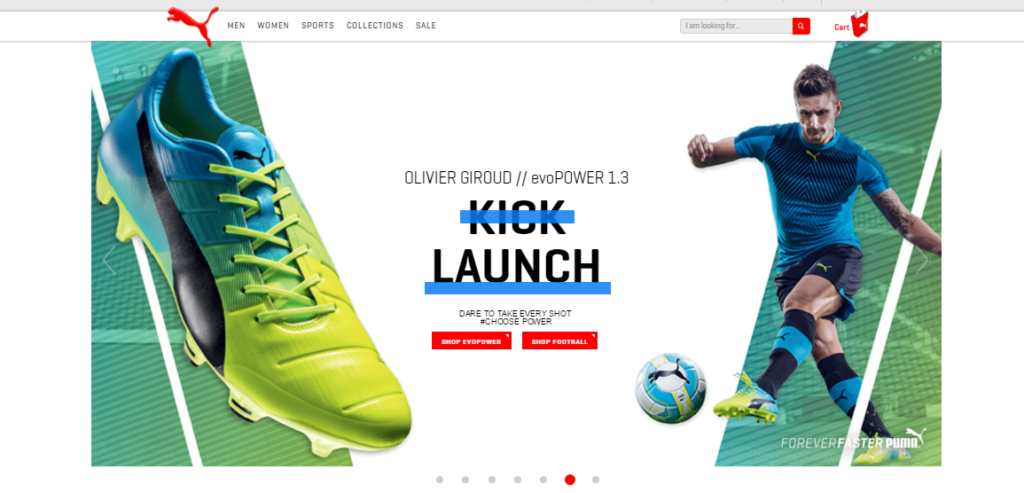
 They have also created separate focussed promotional content for these different categories. See the content featuring the celebrity Rihanna for training shoes below.
They have also created separate focussed promotional content for these different categories. See the content featuring the celebrity Rihanna for training shoes below.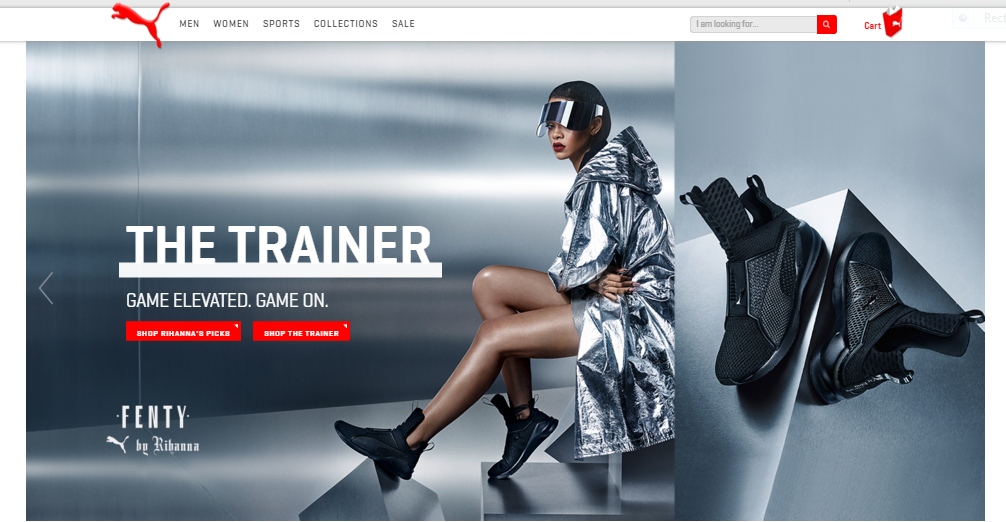
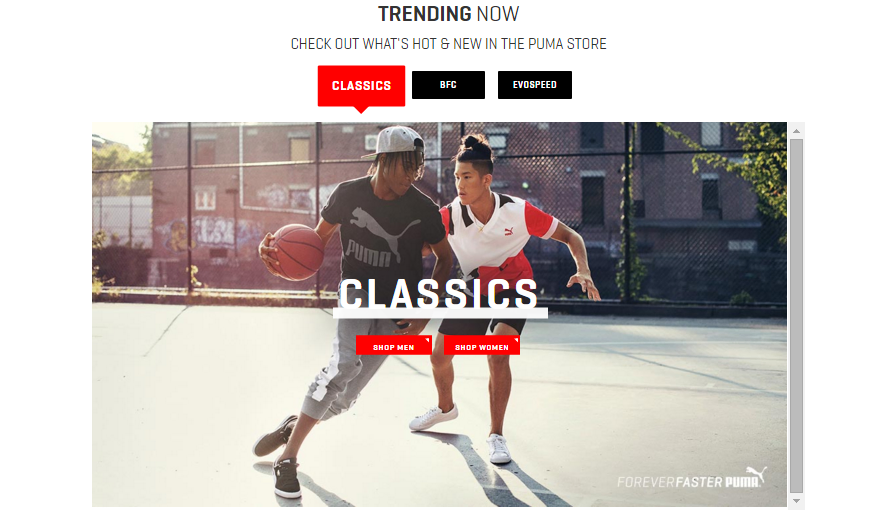 Thus we find that an extremely attractive website of Puma with local content for different geographies has emerged.
Thus we find that an extremely attractive website of Puma with local content for different geographies has emerged.














